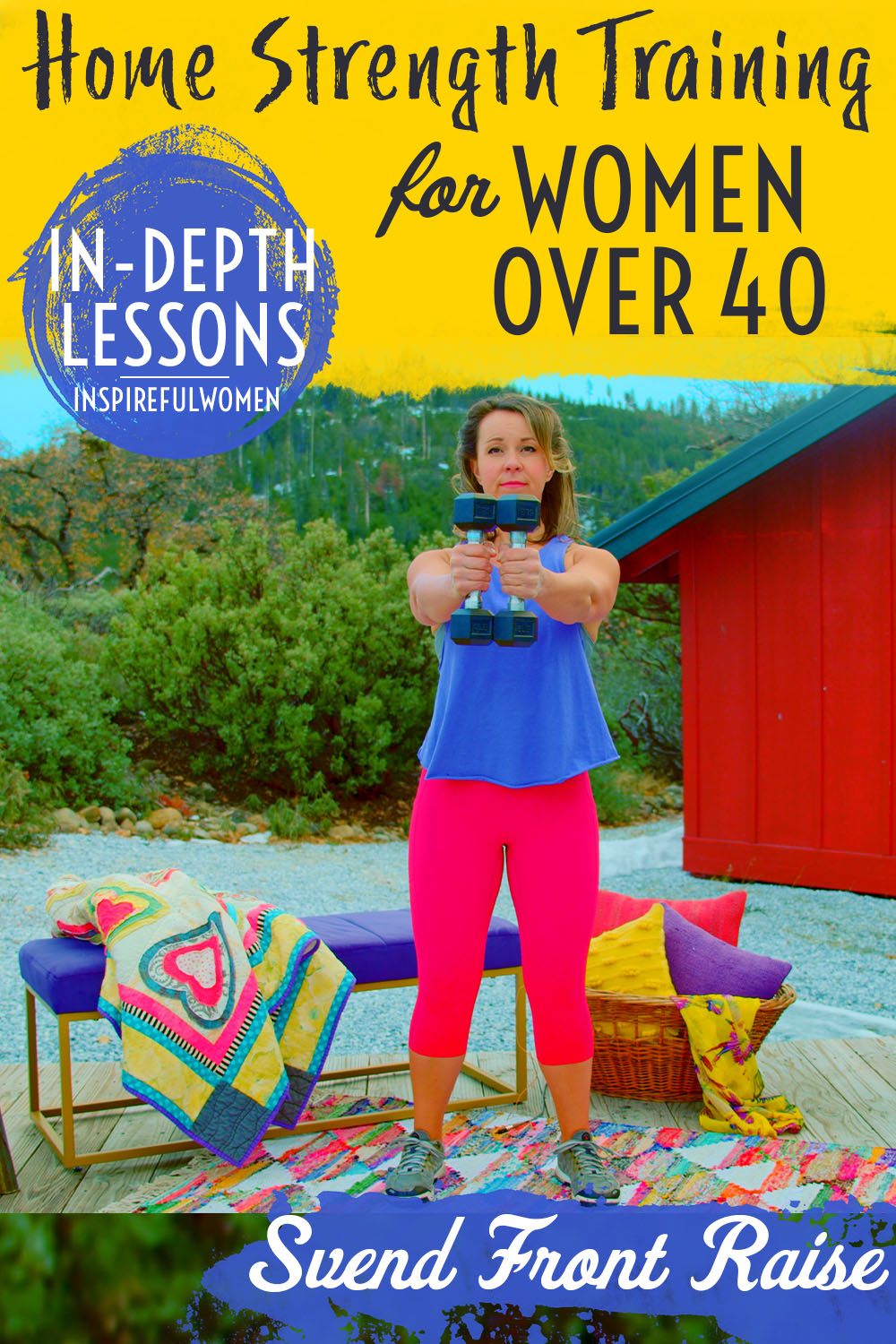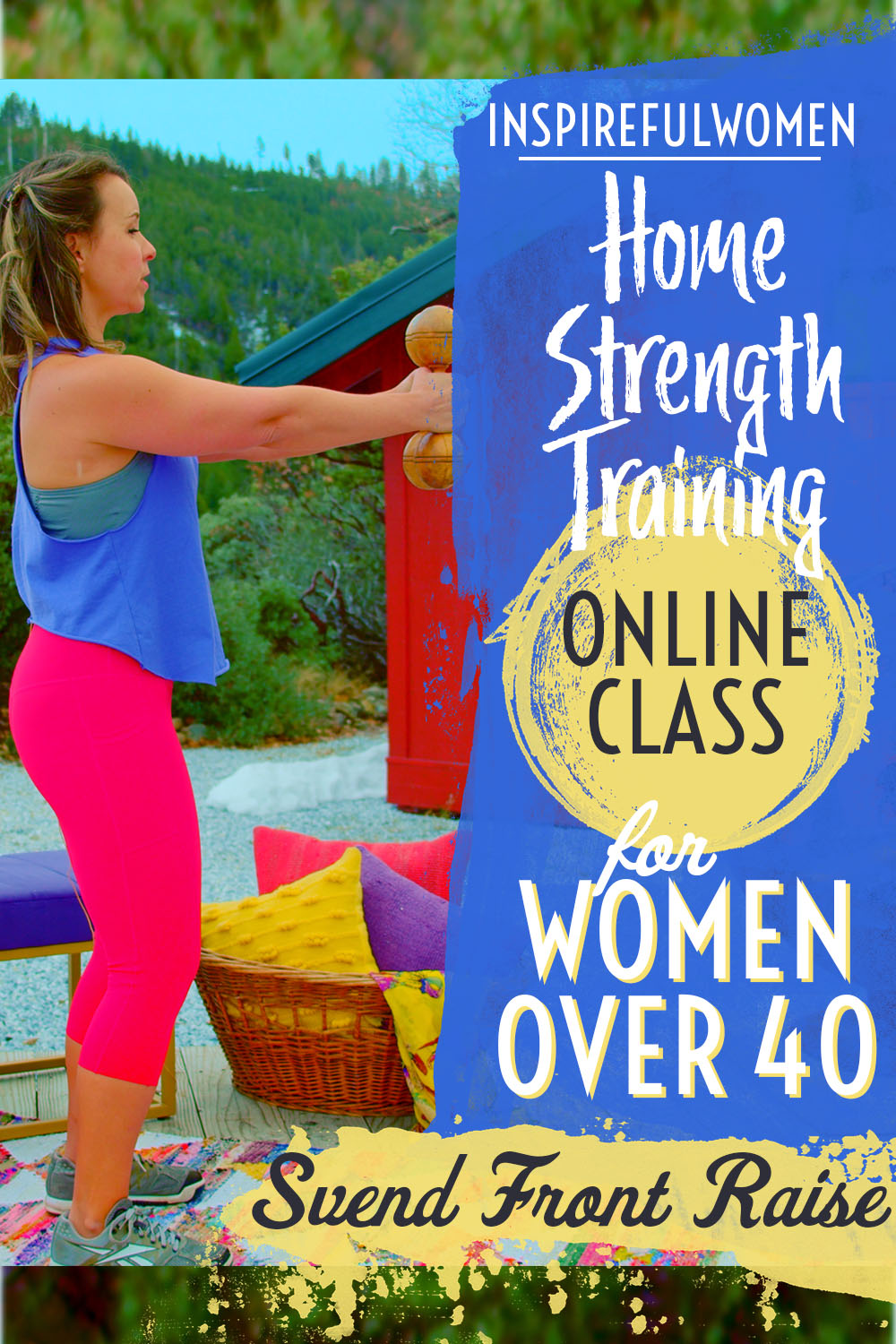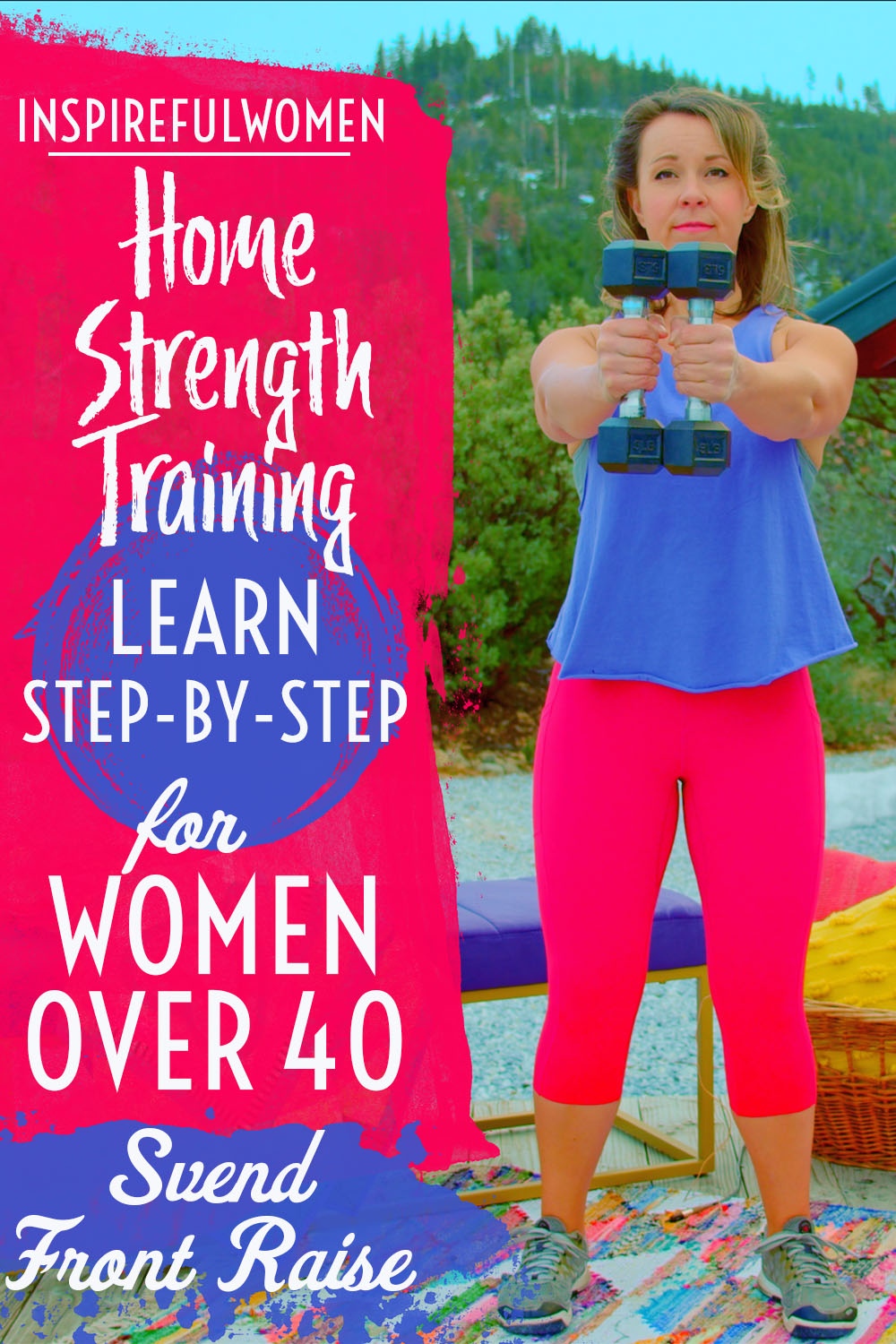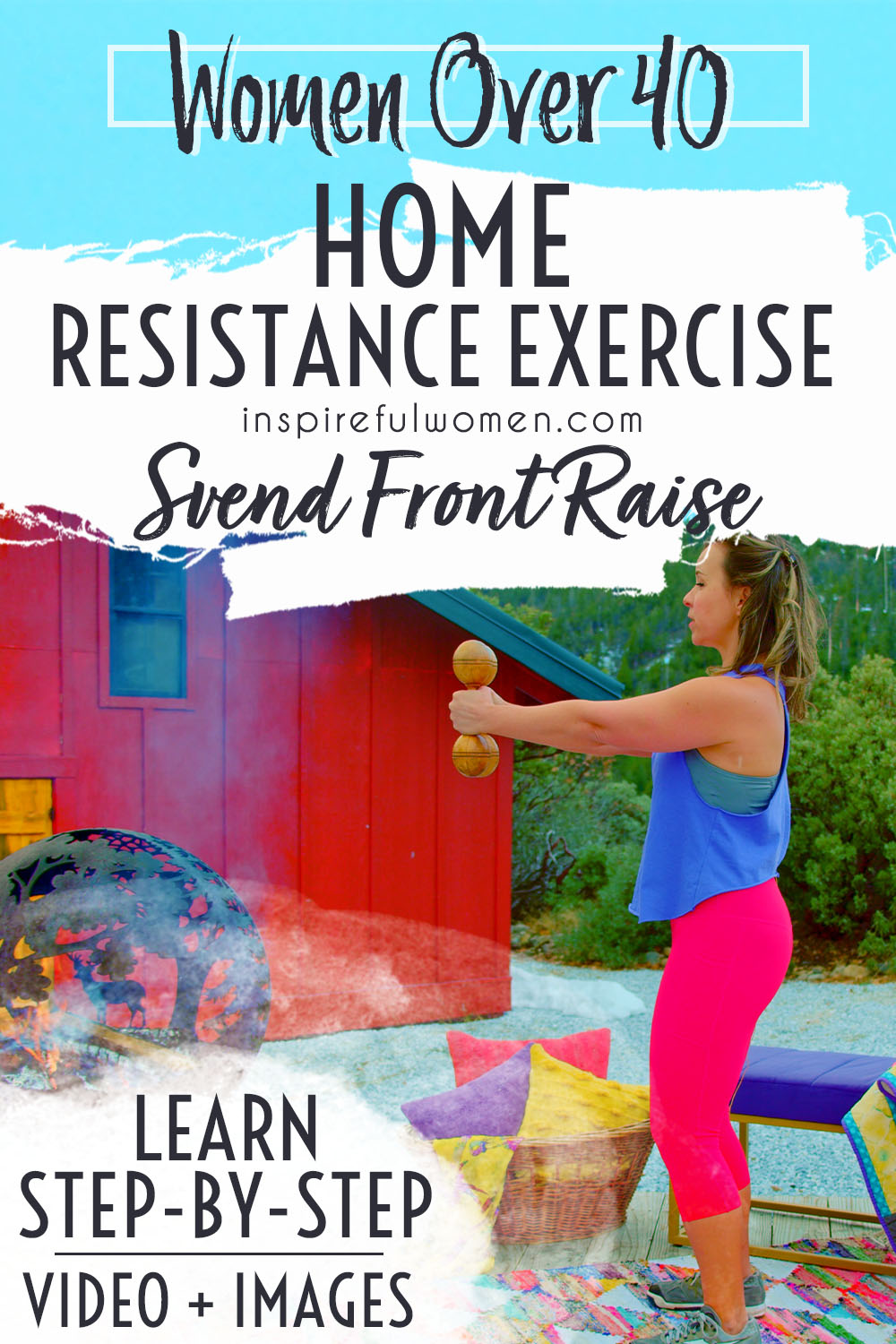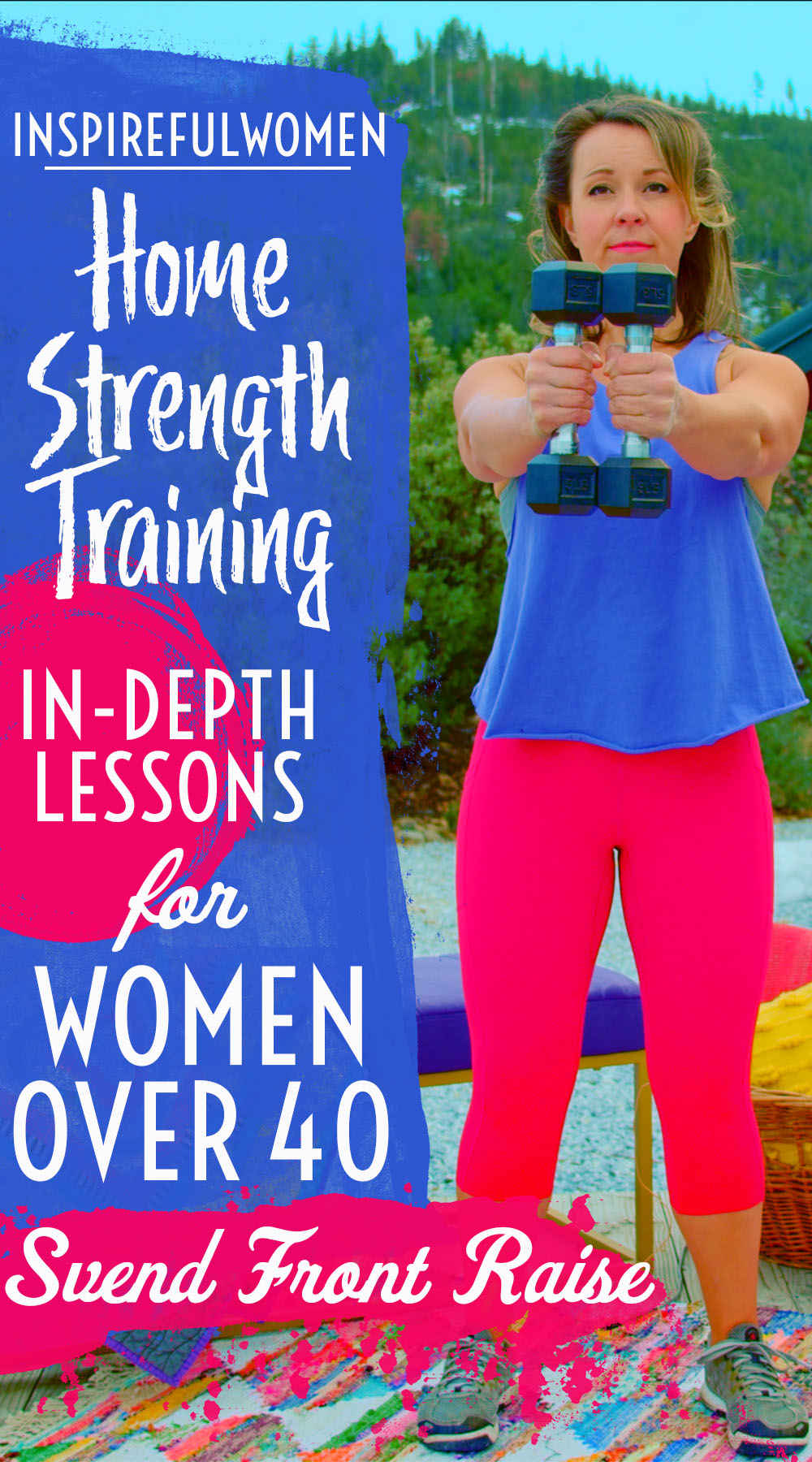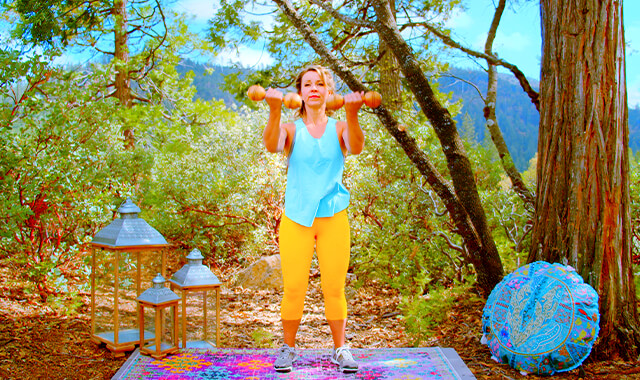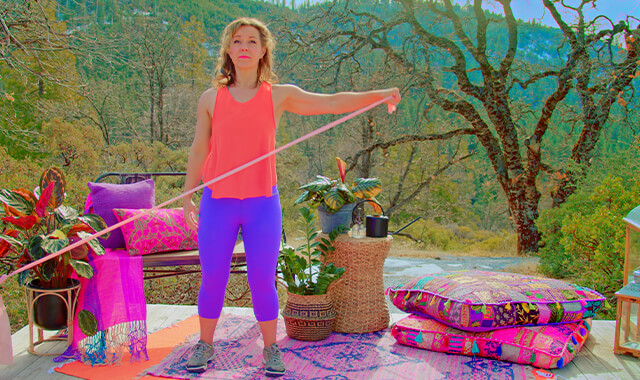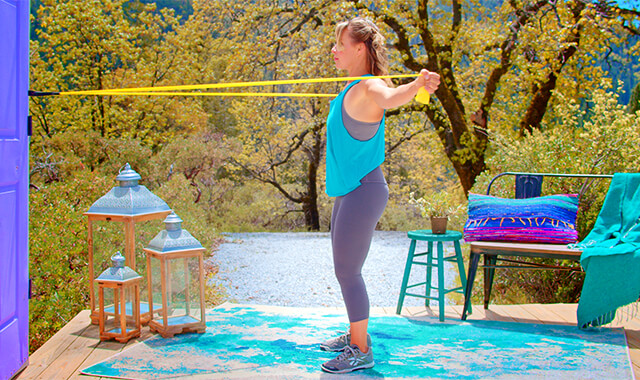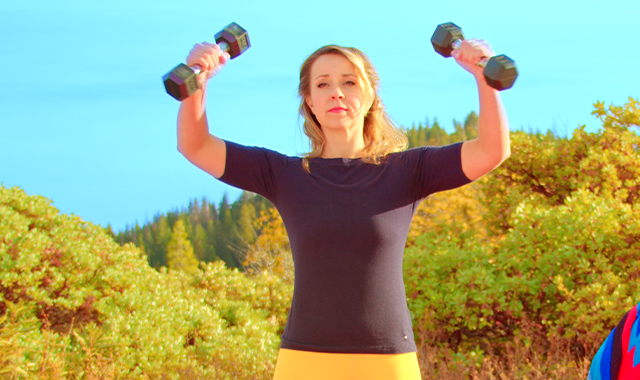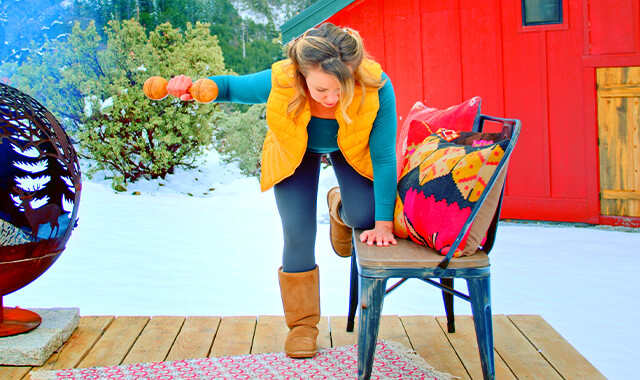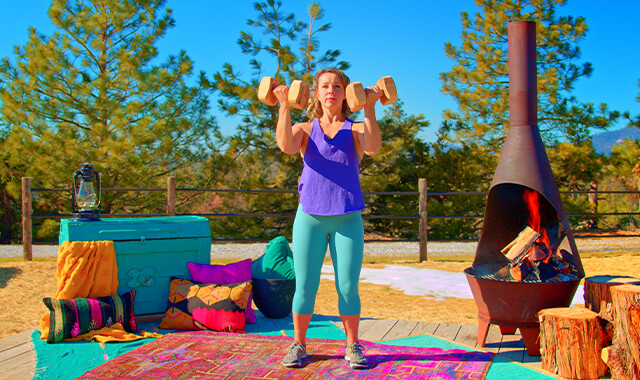Svend Front Delt Reach
How to Do the Svend Front Delt Raise - Shoulder Exercise | In-Depth Guide [VISUAL LEARNERS] Intermediate
Proper Form, Common Mistakes, & Variations | Home Strength Training
WHAT DO YOU WANT TO SEE?
QUICK DEMO
QUICK DEMO
MUSCLES THIS WORKS
MUSCLES
MAIN MUSCLES WORKED IN the Svend Front Raise
ANTERIOR DELTOID
OTHER MUSCLES WORKED:
- Pectoralis major
- Coracobrachialis
- Biceps brachii
- Rotator cuff (infraspinatus, supraspinatus, subscapularis, teres minor)
- Rhomboids
- Mid and lower trapezius
- Latissimus dorsi
STARTING POINTERS
Starting Pointers
WHAT WE'RE DOING TODAY
Other names for this exercise: Front Raise - Svend Press Combo - Front Delt Reach
The Svend Front Delt Reach is an effective exercise designed to target your front deltoid muscles while also engaging your chest and core. This shoulder exercise can strengthen and sculpt your front shoulder muscles while enhancing overall shoulder stability.
This unique version of the front raise is challenging and fun. The movement combines a Svend Press which targets your chest muscles with a standard front raise - targeting the anterior deltoid and biceps. To get the most out of this exercise, focus on pressing the hands together to activate the pectoralis muscle as you lift the upper arm up, straightening the elbows as you go.
HOW TO DO THE EXERCISE
LOOKS
HOW Svend Front Raises SHAPE OUR BODY
Firm and toned shoulders form the bulk of the shoulder muscle (along with the lateral and posterior deltoid).
PROPER FORM
PROPER FORM: Svend Front Raises
EQUIPMENT, SETS & REPS
EQUIPMENT
SUGGESTED STARTING WEIGHT FOR WOMEN:
1 dumbbell 8-10 lbs or 2 smaller dumbbells (5-8 lbs).
SETS & REPS:
2 sets of 8-10 reps
PACE:
Slow and smooth movement.
BODY POSITION
BODY POSITION FOR THE Svend Front Raise
FEET: Feet shoulder width apart, toes pointed forwards.
BODY STANCE: Neutral spine, sternum lifted. Knees bent slightly. It is important that your shoulder blades stay in and down the back and your chest is wide during the whole exercise.
HAND/GRIP: Press in with one palm on each head of the dumbbell - holding the dumbbell horizontally. Alternatively - grasp the handle of the dumbbell, holding the dumbbell vertically; or one dumbbell in each hand - both dumbbells vertically.
ARM: Upper arms at sides, elbows bent. Dumbbell at mid-chest level.
HOW TO DO
HOW TO DO Svend Front Raises
CUE: Squeeze weight INTO your body, rather than simply lifting the weight.
Keeping the arm relatively straight during the movement (a soft elbow), pull the band down, diagonally across the body towards the side of the hip (on the side of the working arm). Pull the shoulder blade down as you pull the arm down for each rep.
For science geeks what's going on here when you do this is: the arm moves to extension, abduction, and internal rotation (the abduction and extension are minimal).
Reverse the movement with control to return to the starting position. Begin the next rep.
HOW TO SAFELY GET OUT OF THE EXERCISE
Pressing your hands in towards each other throughout the exercise.
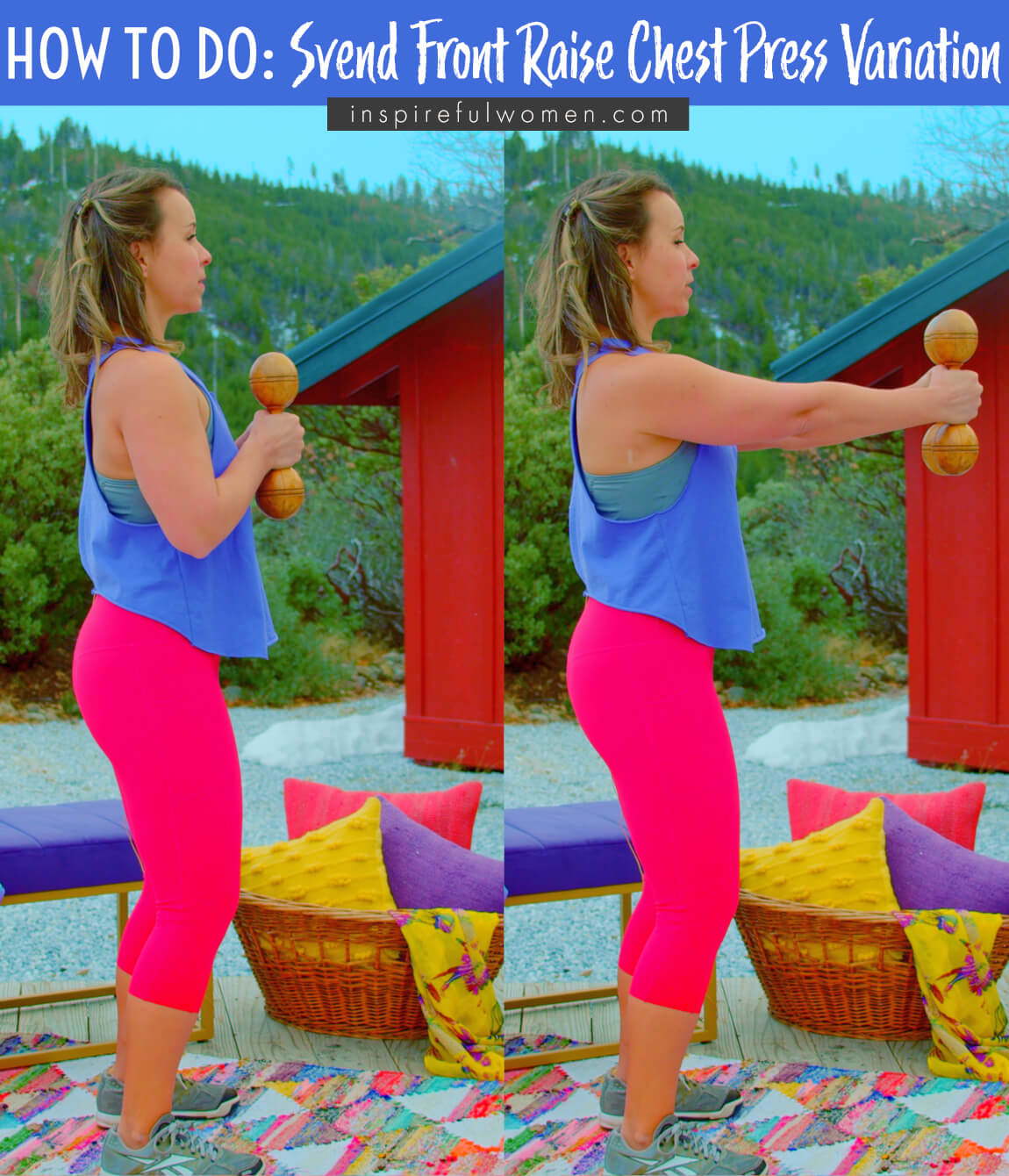
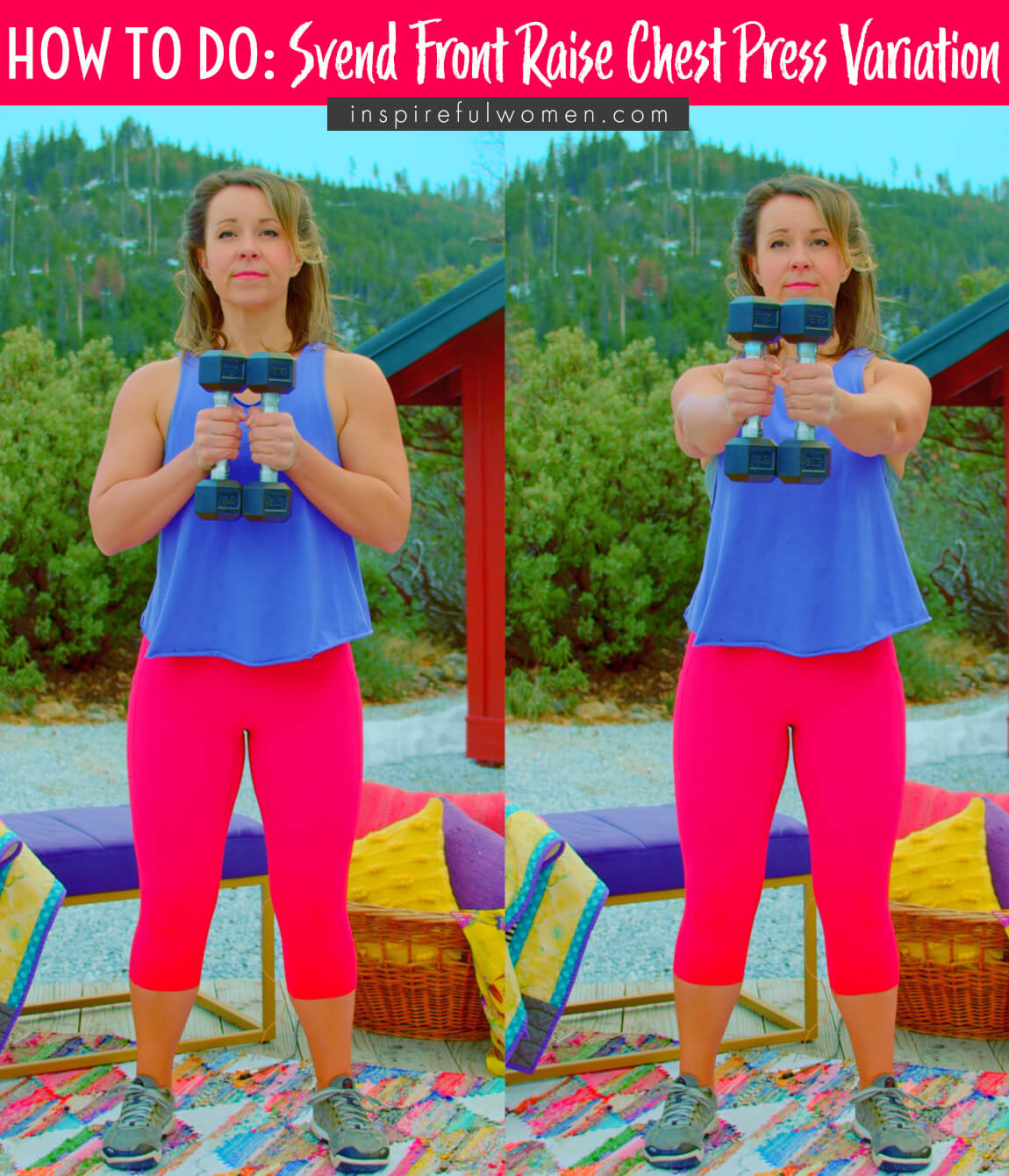

VARIATIONS
VARIATIONS
VARIATIONS OF Svend Front Raises
vertical dumbbell
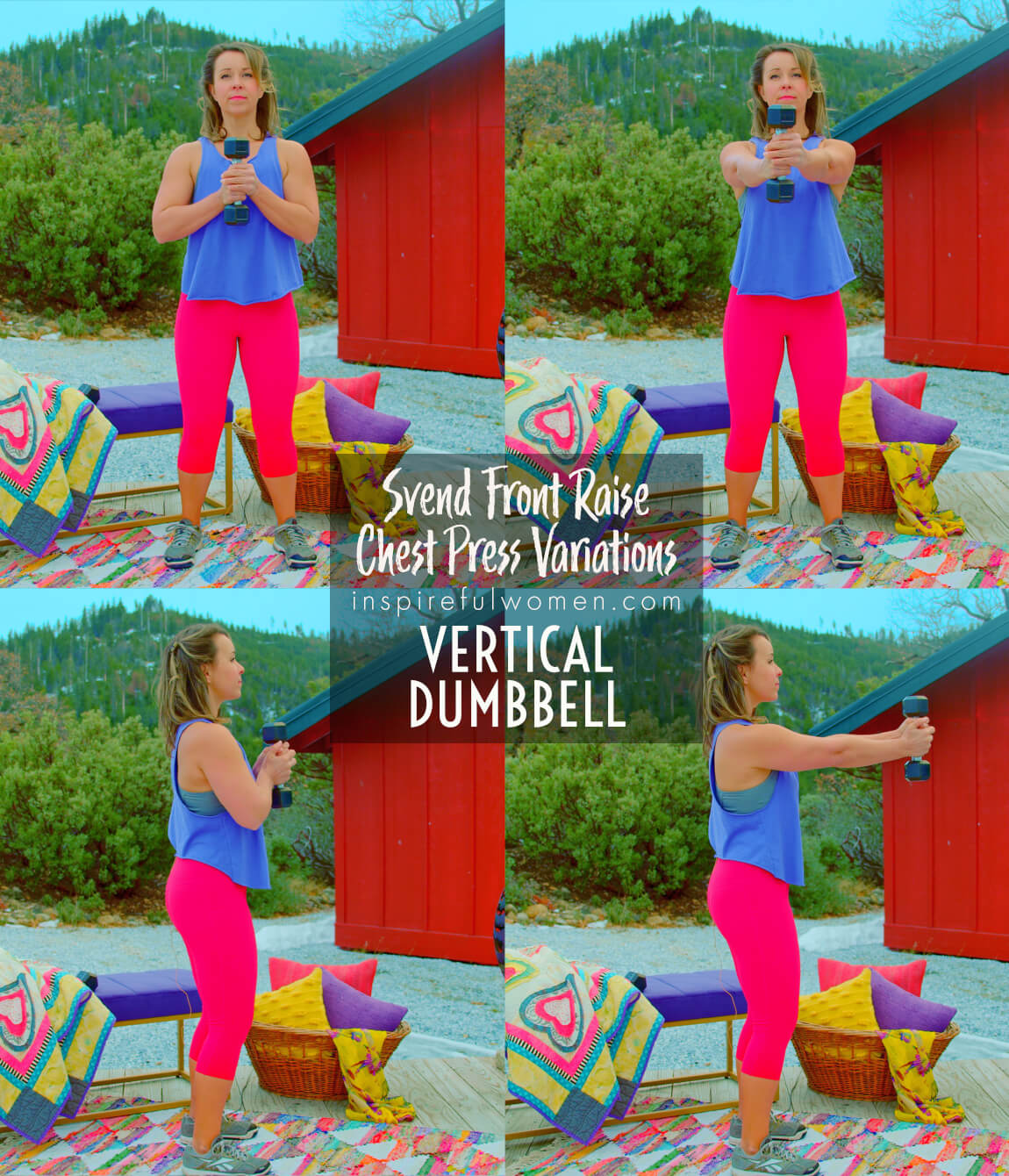
WHAT WE'RE DOING TODAY
WHAT & WHY
BENEFITS OF TRAINING THE ANTERIOR DELTOID
WHAT
Front Raises focus on the anterior deltoid muscle by lifting the arm straight up and lowering it straight down. This is a really effective way to try to isolate the anterior deltoid. Front Raises Plus are exercises that add just a little variety to the path that is taken during the front raises. Moving the arm in more than one direction during the movement will use more muscles. The chest, upper back, arm, and rotator cuff muscles will be more active.
Front Raise Plus exercises are done in standing, lifting the arms to the front while adding rotation or slight movement to the sides. Pay close attention to the exact path that the arm is taking. Concentrate on the control and stability of the shoulder joint and feel how the muscles of the upper body are working together. These exercises will be more beneficial if you really work on controlling the movement.
WHY BOTHER DOING IT?
WHY
WHY DO WE EVEN CARE?
One of the benefits of standard front raises is that they do a pretty good job of really isolating the anterior deltoid muscle. The surrounding muscles, the pectoralis major, coracobrachialis, and biceps brachii, are working at a pretty low level as the anterior deltoid does the heavy lifting. Front Raises definitely serve a purpose, but it is a good idea to include exercises in your weekly program that work all of the muscles that support and move the shoulder joint. You can work these muscles by Just adding a small movement in other directions.
Combining movements, in this case lifting while rotating or moving in and out, will be more challenging for the muscles of the arm, chest, upper back, and rotator cuff. Training all of these muscles to work together will improve motor control, proprioception (your awareness of where your arm is), shoulder stability, and posture.
The rotator cuff muscles are responsible for centering the top of the upper arm bone in the small cup that is part of the shoulder blade. Training the rotator cuff muscles during arm strengthening exercises helps to promote stability of the shoulder and the healthy movement of the joint needed to prevent injury to the soft tissues and joints.
Lifting the arm straight out to the front is a common movement. We do a lot of heavy lifting straight in front of us, lifting kids, groceries, and heavy boxes. When you lift a lot of weight in front of your body, the muscles on the back of the body need to be able to hold you upright so you don’t get pulled forward. It is important to make sure all of the supporting muscles that help to protect the upper back and shoulder joints are strong enough to support the load that the bigger muscles are capable of lifting.
EVERYDAY LIFE
EVERYDAY LIFE &
MUSCLE FUNCTION
HOW WE USE OUR ANTERIOR DELTOID IN EVERYDAY LIFE
1. LIFT THE ARM TO THE FRONT
- Lifting a child out of the crib
- Painting a wall with a roller
- Lifting a pan from the oven
- Lifting a gallon of milk out of the refrigerator
2. HOLDING THE ARM IN FRONT OF YOU
- Pushing a wheelbarrow
- Using a can opener
- Carrying a laundry basket
3. TURNING THE UPPER ARM INWARD (ESPECIALLY WHILE LIFTING OR HOLDING THE ARM TO THE FRONT, ELBOW STRAIGHT)
- Using a screwdriver
- Closing a spigot
- Using a wrench
4. STABILIZES THE SHOULDER JOINT, PROTECTS AGAINST A DOWNWARD FORCE
- Holding heavy items to the side
- Suitcase
- Weights
- Bucket
- Balancing the force of the pectoralis major or latissimus dorsi
- Swimming
- Pulling yourself up on a ladder
HOW TO FEEL WHAT MUSCLE IS WORKING
How to Feel What Muscle is Working
Place your fingers of one hand on the top of the opposite shoulder towards the front. Place the other hand under a stationary object, like the top of a table or the arm of a chair. Lift the arm forward and up. You should feel the muscle fibers contract under your fingers.
SCIENCY STUFF
SCIENCY STUFF
SPIFFILICIOUS FACTS ABOUT MUSCLES & MOVES
The deltoid muscle is the most visible muscle in the shoulder region. The deltoid originates on the shoulder blade (scapula) and the collarbone (clavicle) and attaches to the upper arm bone (humerus), its primary function is to lift the arm. The muscle is frequently described as three different portions - the anterior (front) fibers, the middle fibers, and the posterior (rear) fibers. The position of the muscle fibers will determine their action. The anterior or front fibers act to lift the arm up to the front and rotate the arm inward. The deltoid helps to stabilize the shoulder joint, especially against a downward pull from gravity, or the pull of the strong lats and pectoralis major muscles.
ALLLL MUSCLES & WHEN
ALL MUSCLES WORKING & WHEN DURING THE Svend Front Raise
The core stabilizers work to hold the spine in a neutral position throughout the exercise.
The pectoralis major works isometrically throughout the exercise to hold the hands pressed together. The coracobrachialis will help. The anterior and lateral deltoid and biceps work to hold the arm up.
The movement of the arms begins with the arm straight down to the side. The scapular stabilizers hold the shoulder blades down and in. The anterior deltoid along with the biceps, coracobrachialis, and upper fibers of the pectoralis major contract concentrically to lift the arm straight up in front of the body, until the arm is parallel to the floor. The triceps and anconeus work to straighten the elbow as the hands are pushed forward.
The muscles of the forearm (extensor carpi radialis longus and brevis, extensor carpi ulnaris) will work isometrically to hold the wrist in a neutral position against the downward pull of the dumbbell.
The anterior deltoid, biceps brachii, coracobrachialis, and superior fibers of the pectoralis major work eccentrically to lower the arm back down to the starting position. The biceps act concentrically to bend the elbows and pull the hands in.
PIN IT FOR LATER!
